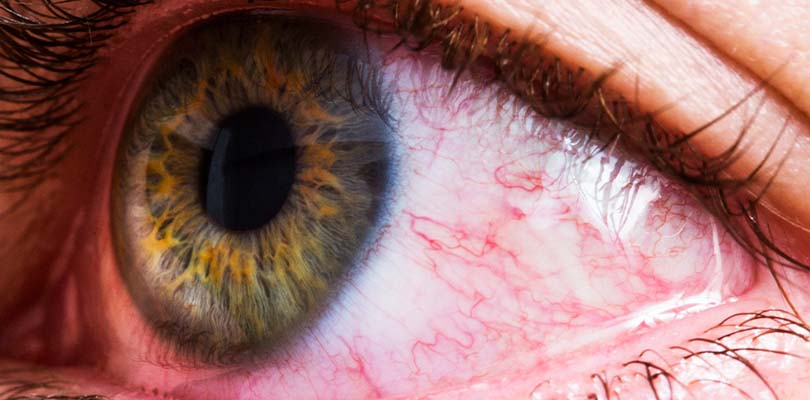Are Skin Tags Cancerous?
Almost everyone develops a skin tag over the course of their life. While you may consider it unsightly, a skin tag doesn’t typically hurt. You may wonder if your skin tag is a form of skin cancer—it is an unexpected growth, after all. Should you be worried?
What Are Skin Tags?
Skin tags, medically referred to as acrochordon, are benign growths that hang off the skin—they are essentially tumors of the skin.
Skin tags are soft to the touch and connect to your skin’s surface by a piece of tissue referred to as the stalk. The stalk is narrow, which gives the skin tag bulge the flexibility to painlessly wiggle back and forth (and gives the appearance of a tiny balloon). These growths will generally be flesh-toned but can appear slightly darker.
Skin tags develop over time, starting as a small bump on the skin and eventually growing into the skin tag. They are likely to appear in folds on the neck, the underarms, beneath the breasts, on the torso, or in the genital region. These are permanent growths unless you have them removed.
What Causes Skin Tags?
You can have one skin tag, or you can have hundreds, and their origin is not entirely clear. Skin tags affect all ages and can occur anywhere on the body, including the face. The most common place for skin tags are the neck and armpits. The friction created from skin rubbing against the skin (or clothing) causes tags in some people, which explains why skin tags are often found in the folds of the body.
While the exact cause of skin tags is unknown, there is speculation that these small tumors happen when clusters of collagen and blood vessels are caught inside thicker skin. As people age, skin tags start to appear more; they are common in people 60 and older. Others who may be more prone to skin tags are:
- Those with family members who have developed skin tags
- Pregnant women
- People who are overweight or have gained excess weight
- Those who have diabetes
Are Skin Tags a Sign of Skin Cancer?
Skin cancer is a disease where abnormal (aka cancerous) cells form in the skin’s tissues. While skin cancer generally affects the sun-exposed parts of the body, that is not always the case.
Carcinomas and melanomas can develop anywhere and depend on the type of skin cancer, the cancer can present as firm, red nodules or moles that change color, shape or feel. Moles can resemble skin tags, which is why it’s better to err on the side of caution. When it comes to skin cancer, moles can serve as warning signs.
Abnormal moles are more likely to become cancerous. If your skin tag changes color or shape, make an appointment to see your doctor for further assessment.
Skin Cancer Causes
Skin cancer often grows on skin that is exposed to sun or ultraviolet radiation. However, skin that is not usually in direct sunlight can develop cancer as well.
Other factors that may be the result of skin cancer include exposure to toxic substances or having a condition that weakens your immune system. Sunburns, heredity, and skin lesions may also play a part in whether a person develops skin cancer.
Take precaution and have your doctor assess any sun damage your skin has experienced over the last year.
When to Worry About Your Skin Tag
Scanning for irregularities will help you identify whether your issue is skin cancer or not. Keep in mind that skin tags can be mistakenly identified as another issues or conditions.
If your skin tag is painful, that is an abnormality and should be brought to the attention of your physician. Pain will often come with other symptoms which include: sudden skin tag growth for no reason, changing color, weeping, or bleeding. If you have a skin tag that exhibits these characteristics, it may be the result of another issue.
The Visibility of Skin Cancer
A lot of research on finding skin cancer shows that skin cancers can be caught earlier than other cancers because of their visibility. Catching skin cancer in the early stages means that the condition is easier to treat.
When it comes to moles, be especially conscious if your growth is asymmetrical, has irregular borders, different colors, continues to grow, or evolve in any capacity.
You should monitor any new or unusual growths on your body, constantly aware of any changes so you can report them to your physician. Also, skin cancer can present as nodules, irregular patches, or bumps on the skin’s surface that can burrow into deeper layers of the skin.
Skin Tag Growth
Skin tags develop slowly enough that you may not notice it for a little while. They can grow from a few millimeters in size up to half an inch long. Once they have formed, they generally don’t keep increasing in size. The reason that they grow so fast and seemingly appear without notice is that there is blood circulating into the skin tag.
Cancer that is confined to a single organ or body system is scary. But why does cancer spread? Learn more about why cancer metastasizes.
If your skin tag turns black overnight, it is not a symptom of cancer. On this occasion, the skin tag will have twisted and caused a blood clot to form. This instance is called a thrombosed skin tag. It’s been without oxygenated blood and will fall off on its own accord within 3 weeks.
Skin tags are a harmless type of tumor, and the best way to stop them from growing is to have them removed sooner rather than later.
The Cause of Painful Skin Tags
Location of the skin tag plays a part in how painful it may become over time. Sensitive areas are likely to feel more irritated, as well as areas that experience friction from clothing or jewelry rubbing against them.
There are situations where skin tags can be uncomfortable and even hurt—usually when they have become irritated or infected. Infection can set in if there is a break in the skin (generally due to your interference with the skin tag, so make sure you leave it alone).
Playing with, pulling on, or picking at the skin tag will always make it worse. These types of activities can cause the skin tag to bleed, which brings other issues.
If your skin tag becomes infected or is in pain, go see your doctor. Do not have the skin tag removed until the infection is gone.
Skin Tag Removal and Cancer Biopsy
Your doctor may remove the skin tag and send it for a biopsy, especially if it is abnormal. The doctor will remove the skin tissue and the lab performs a test to determine whether or not the skin tag is cancerous. A majority of the time, the biopsy will confirm that the skin tag is benign.
Bumps that resemble skin tags that bleed, grow, or have more than two colors can require a biopsy to test for skin cancer (or to exclude skin cancer as the cause of the growth). Larger or uncommon growths may be sent to a pathologist to examine under a microscope to verify if it is a skin tag or a growth of another kind.
Instances, where the skin tag bleeds or changes rapidly, will also provide a reason to have the growth sent for biopsy. If there is a history of cancer in your family, biopsies are especially important to rule out a cancer diagnosis.
Skin Tags and Their Cancer Connection
Cancer is rarely linked to skin tags, but it does happen on occasion. Extremely rare cases of skin cancers have been found in skin tags.
Basal cell carcinoma, squamous cell carcinoma, and malignant melanoma may mimic skin tags, which is why it’s better to have them checked out if you’re concerned. Be reassured that skin tags are not usually skin cancer and they do not turn into skin cancer if they are left untreated.
Risk factors associated with skin cancer (such as sunlight exposure or fair skin) are not associated with skin tags. If you experience any growths on your body, always monitor them. If your skin tag starts to change, grow, alter color, look different, or cause pain, see a doctor immediately.
Prevention and Removal
There is currently no way to prevent skin tags, but you are able to get rid of them through a variety of means.
Skin tag removal is a cosmetic procedure, and doctors usually only recommend removing the skin tags if they are causing irritation or discomfort. Removal of skin tags will not cause more to grow in the same spot, however, you may notice more skin tags growing on your body as you age.
Consult a doctor (or dermatologist) to avoid a self-diagnosis and skin tag removal on your own, as bleeding and infection may be the result.
There are a few ways that a skin tag can be removed:
- The doctor will numb the area and then snip it off
- Cryotherapy freezes the area and causes the skin tag to fall off in about two weeks
- Electrodesiccation which uses an electric needle to dry out the tissue and essentially burn the skin tag off
Since skin tags are benign growths, most medical conditions associated with them are harmless. It is unusual that skin tags become cancerous or precancerous growths, but it’s always better to have a doctor look at them if you are concerned.







